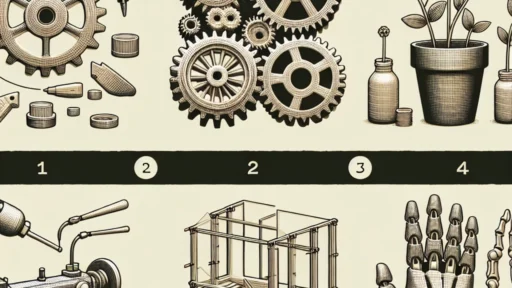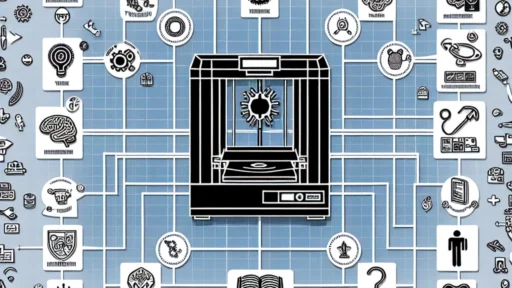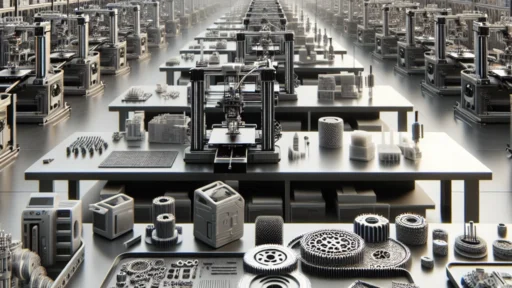Filament Compatibility: What Works with Your 3D Printer?
If you’ve recently delved into the exciting world of 3D printing, you’re likely buzzing with ideas. But before you roll out that flashy new design, there’s one crucial factor to consider: filament compatibility. With a dizzying array of filament types available, how do you know which ones will work best with your 3D printer? Let’s untangle this thread, shall we?
Understanding Filament Types
At the heart of every 3D printing project is the filament you choose. The most common materials are PLA, ABS, PETG, TPU, and Nylon. Each has unique properties that make it suitable for different applications, so understanding these differences is essential for any aspiring maker.
-
PLA (Polylactic Acid): If you’re just starting out, PLA is your best buddy. It’s incredibly easy to print with and works well on most printers without the need for a heated bed. Plus, it’s biodegradable, which makes it a popular choice among eco-conscious creators. However, keep in mind that while it’s sturdy, it can be a bit brittle — not ideal for high-stress applications.
-
ABS (Acrylonitrile Butadiene Styrene): Looking for something a bit more robust? ABS is the way to go. It’s tougher than PLA and has excellent impact resistance, making it ideal for functional parts. However, it does require a heated bed and good ventilation due to fumes during printing, so be prepared to deal with that.
-
PETG (Polyethylene Terephthalate Glycol): This one’s a middle ground between PLA and ABS. PETG is durable, flexible, and resistant to moisture, which makes it perfect for many everyday applications. It’s also less prone to warping, which can be a nice bonus if you’re battling with print quality.
-
TPU (Thermoplastic Polyurethane): If you’re interested in flexible prints, TPU is your go-to filament. It’s soft, stretchy, and can be used for everything from phone cases to shoe soles. Just remember that printing with TPU might require some patience as it can be a bit tricky with standard printers.
-
Nylon: Strong and resilient, nylon is a favorite for industrial applications. It has excellent flexibility and durability but can be challenging to print due to its tendency to absorb moisture. Make sure your printer can handle it before diving into a nylon project.
The Compatibility Terrain
Now that we’ve brushed up on the filament types, let’s get to the nitty-gritty: how do you know if a particular filament will work with your printer?
-
Check Your Printer’s Specifications: Most manufacturers provide information on compatible filaments in the user guide. Some 3D printers are more versatile and can handle a variety of materials, while others are specifically designed for certain filaments.
-
Know Your Nozzle Temperature: Different filaments require different temperatures for optimal printing. For example, PLA typically extrudes at about 190-220°C, while ABS works best around 210-250°C. Make sure your printer can reach and maintain these temperatures.
-
Heated Bed Requirements: If you’re planning to work with ABS or nylon, you’ll likely need a heated bed for better adhesion and reduced warping. If your printer lacks a heated bed, you might be limited to PLA and PETG.
-
Filament Diameter: Most filaments come in either 1.75mm or 2.85mm diameter. Ensure you have the correct size for your printer to prevent any clogging or jamming.
-
Community Feedback: If you’re unsure about your printer’s capabilities with a specific filament, don’t hesitate to consult online forums or review groups. Chances are, someone has already tested it and shared their findings.
Experiment and Tweak
The beauty of 3D printing is experimentation. Don’t be afraid to test different filaments once you’ve got the basics down! You might find that PLA works exceptionally well for your projects, or you might need something more robust like PETG or ABS.
As you feel more comfortable, consider trying out specialty filaments like carbon-fiber-infused materials or glow-in-the-dark PLA for added fun. Just remember to check compatibility first!
In the colorful world of 3D printing, understanding filament compatibility is crucial. By exploring different materials and knowing the capabilities of your printer, you can unlock a new level of creativity. So get printing, experiment with your options, and watch your ideas come to life!






